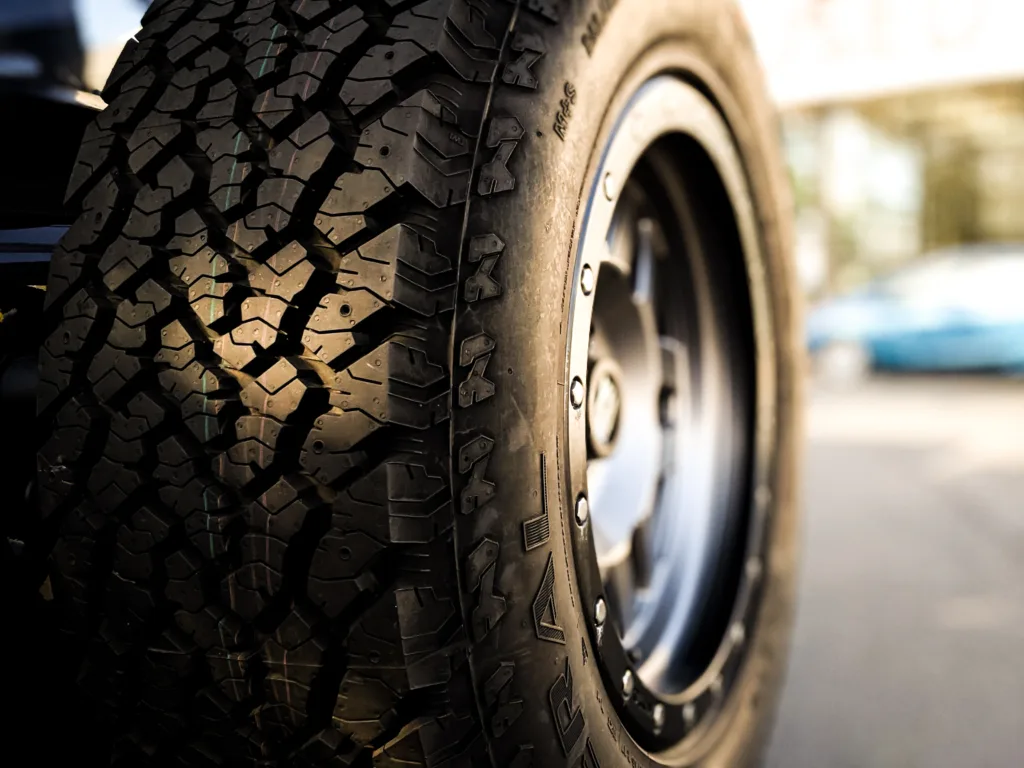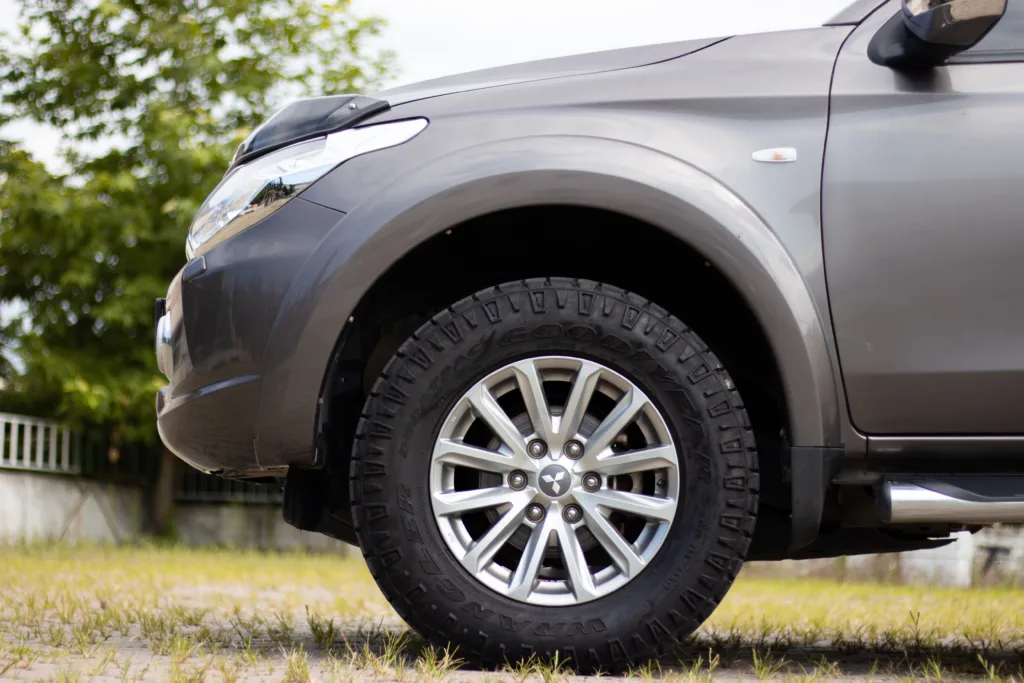Tires are an essential component of any vehicle, ensuring a smooth and safe ride. However, they are susceptible to damage, especially from punctures caused by nails, screws, or other sharp objects. While some punctures can be repaired, there are certain conditions under which a tire cannot be patched.
One crucial factor to consider is the location of the puncture. For a safe repair, the puncture must be at least 1/2 inch away from the edge of the tire tread where the internal steel belt begins. This area is known as the shoulder or sidewall of the tire. Any puncture within this 1/2 inch zone cannot be repaired and should be highlighted in red, indicating that it is beyond repair.
Moreover, puncture repairs are limited to the crown area of the tire, which is the center of the tread, approximately 1 to 1.5 inches in from each shoulder. This restriction ensures that the repair is performed in the most structurally sound part of the tire. Attempting to repair a puncture outside of this area may compromise the tire’s integrity and increase the risk of a premature repair failure.
Size is another important consideration when determining if a tire can be patched. Puncture repairs should not exceed 3/8 of an inch in diameter. Larger punctures may compromise the overall strength of the tire and make it unsafe for further use. It is crucial to adhere to this size limit to ensure the tire remains reliable and stable on the road.
It is worth noting that using a standard puncture repair unit in the shoulder or sidewall area can lead to additional stress on the upper sidewall, which may result in a premature repair failure. This is due to the unique characteristics of the tire in these regions. Therefore, it is essential to avoid attempting repairs in these vulnerable areas to ensure the long-term effectiveness of the tire.
Adhering to industry guidelines is crucial when determining if a tire can be patched. Factors such as the location of the puncture, the size of the damage, and the specific characteristics of the tire must all be considered. Only a proper patch/plug repair that completely seals the puncture from inside the tire and through the entire injury channel ensures a safe and reliable repair. By following these guidelines, drivers can make informed decisions about repairing their tires and maintain optimal safety on the road.
How Close To Sidewall Can You Patch A Tire?
When it comes to patching a tire, it is important to consider the location of the puncture. For a safe repair, the puncture should be at least 1/2 inch away from the edge of the tire tread where the internal steel belt begins. This area is usually referred to as the shoulder or sidewall of the tire.
Patching a puncture that is less than 1/2 inch from the start of the internal steel belt on the shoulder or sidewall of the tire is not recommended and cannot be repaired. This is because the sidewall of the tire is a critical area that provides structural support and helps maintain the tire’s integrity.
To ensure the safety and longevity of the tire, it is best to avoid patching punctures that are too close to the sidewall. Instead, it is recommended to replace the tire in such cases.
Remember, proper tire maintenance and regular inspections are essential for ensuring safe driving conditions.

How Big A Hole In A Tire Can Be Patched?
When it comes to patching a tire, there are certain limitations on the size and location of the hole that can be repaired. Specifically, the patching process is limited to the crown area of the tire, which is the center of the tread. This means that any punctures outside of this area, towards the edges or shoulders of the tire, cannot be patched.
In terms of size, the hole that can be patched should not exceed 3/8 of an inch in diameter. This measurement is used to ensure that the patch can provide a secure and effective seal. Any punctures larger than this size may compromise the integrity of the tire and make it unsafe to use.
To summarize, the hole in a tire that can be patched should be located in the crown area of the tread and should not exceed 3/8 of an inch in diameter. This ensures that the patch can be applied properly and allows for safe and reliable tire usage.
Why Can’t You Patch A Tire Shoulder?
The reason why patching a tire shoulder is not recommended is due to the unique characteristics of the tire in that area. The shoulder, also known as the S-T (shoulder-to-tread) area, is where the sidewall meets the tread. This area of the tire is subjected to a higher level of stress, as it supports the weight of the vehicle and absorbs the lateral forces during turns.
When a puncture occurs in the shoulder area, using a standard puncture repair unit can be problematic. The repair unit is typically designed to be applied to the center of the tread or the lower sidewall, where the stress levels are lower. However, when applied to the shoulder area, the repair unit may be exposed to higher stress levels, which can potentially lead to premature failure of the repair.
The shoulder area of the tire is subjected to constant flexing and bending, especially during cornering. This can cause the repair unit to become less effective over time, as the stress on the area can weaken the bond between the repair unit and the tire. Additionally, the shoulder area is also more prone to heat buildup, which can further compromise the integrity of the repair.
To ensure the safety and longevity of the tire, it is generally recommended to replace the tire if a puncture occurs in the shoulder area. This allows for a proper repair or replacement of the tire, ensuring that it can continue to perform at its best and maintain optimal safety on the road.
Patching a tire shoulder is not recommended due to the higher stress levels and unique characteristics of the area. It is best to replace the tire to ensure proper repair or replacement and maintain overall safety on the road.
Can A Tire Be Patched If It Is Completely Flat?
A tire can be patched even if it is completely flat. However, it is important to follow the proper tire repair process to ensure the patch is effective and the tire is safe to use.
The first step in repairing a flat tire is to locate the puncture. This can be done by visually inspecting the tire or by using a water and soap solution to identify any air bubbles forming at the site of the puncture.
Once the puncture is located, the tire needs to be removed from the wheel for proper repair. This involves demounting the tire from the rim using specialized tire tools.
After the tire is removed, the next step is to prepare the puncture site for repair. This typically involves cleaning the area to remove any dirt, debris, or moisture that may interfere with the adhesion of the patch.
Once the puncture site is cleaned, a patch/plug repair can be performed. This involves inserting a patch into the puncture from the inside of the tire and through the entire injury channel. The patch is typically made of a rubber compound that is designed to bond with the tire’s inner liner.
To ensure a proper seal, the patch needs to be securely bonded to the tire. This can be achieved by applying a vulcanizing cement to the puncture site before inserting the patch. The cement acts as an adhesive and helps create a strong bond between the patch and the tire.
After the patch is inserted, any excess material is trimmed off, and the tire is remounted onto the wheel. It is important to follow proper mounting procedures to ensure the tire is properly balanced and aligned.
The repaired tire should be properly inflated and checked for any air leaks. This can be done by submerging the tire in water and looking for any bubbles indicating air leakage.
A tire can be patched even if it is completely flat. However, it is important to follow the proper tire repair process, which includes locating the puncture, removing the tire from the wheel, cleaning the puncture site, performing a patch/plug repair, remounting the tire, and checking for any leaks. Following industry guidelines ensures a proper and safe repair.

Conclusion
Tire repairs should be carried out with utmost care and adherence to industry guidelines to ensure the safety and longevity of the tire. It is crucial to identify the location of the puncture and determine if it falls within the acceptable repair zone, which is the crown area of the tire’s tread. Punctures that are too close to the shoulder or sidewall, or larger than 3/8 of an inch in diameter, cannot be repaired and require tire replacement.
A proper tire repair involves using a patch/plug repair method, which completely seals the puncture from the inside of the tire and through the entire injury channel. This ensures that the repaired area is reinforced and protected, reducing the risk of premature repair failure.
It is important to note that using a standard puncture repair unit in the shoulder or sidewall area can result in additional stress on the upper sidewall, potentially leading to repair failure. Therefore, it is crucial to limit the repair to the crown area of the tire and follow the specific guidelines for safe and effective repairs.
By following these proper tire repair processes, we can ensure the integrity of the tire and promote safety on the road. Regular inspections and prompt repairs are essential to maintain the performance and longevity of our tires, ultimately enhancing our driving experience and protecting our investment.
